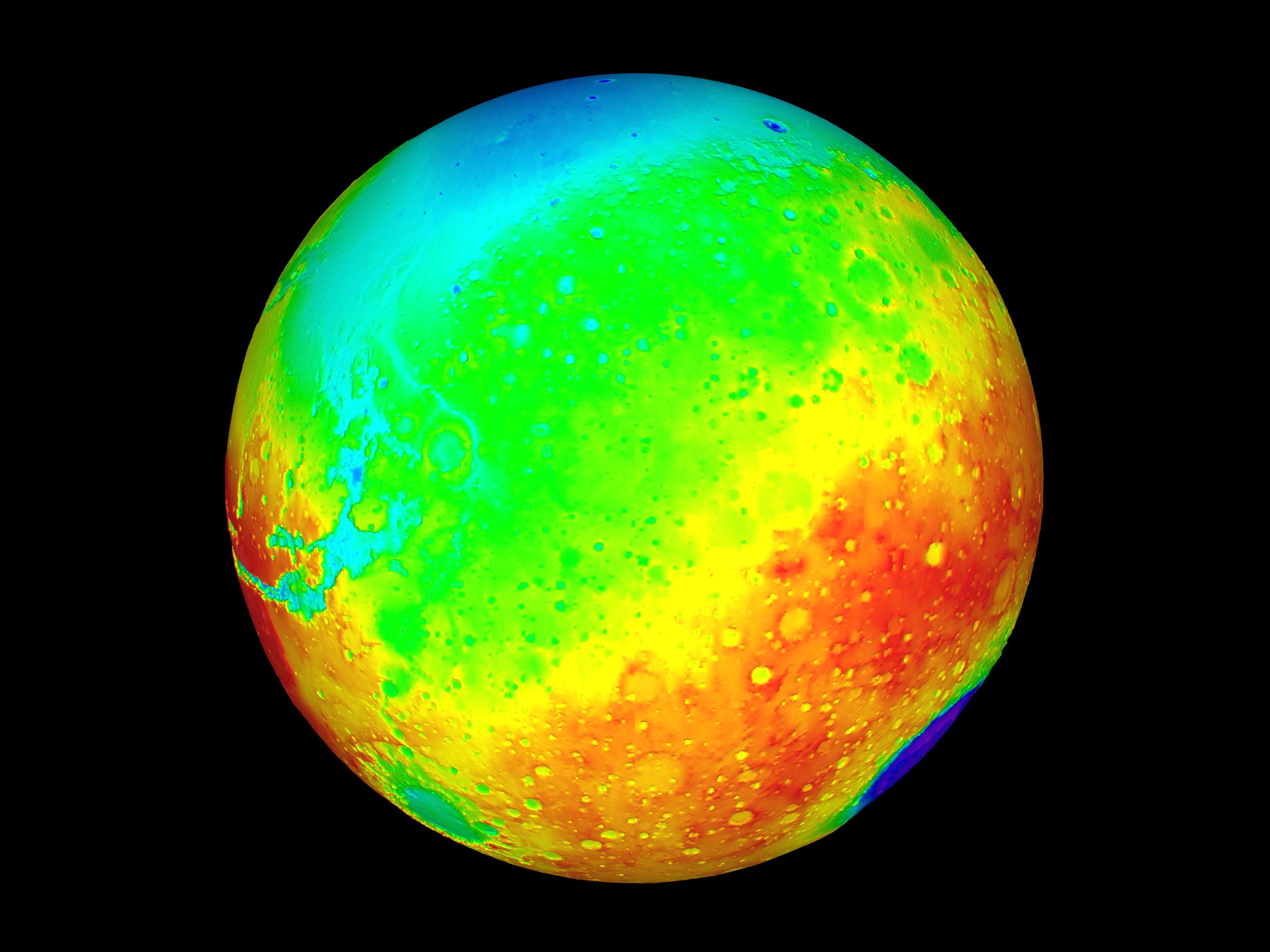How Hot On Mars: Unveiling The Red Planet's Temperature Secrets
Have you ever wondered how hot on Mars? The Red Planet has been a topic of fascination for scientists, space enthusiasts, and curious minds alike. While Mars may seem like a fiery world from afar, the reality is far more complex. In this article, we'll dive deep into the temperature dynamics of Mars, exploring its extremes, climate, and what it means for future exploration. So, buckle up and let's uncover the truth about how hot on Mars!
Mars has always captured our imagination, partly because of its fiery red hue. But don't be fooled by appearances—this planet isn't all heat and flames. In fact, Mars is a world of extremes, with temperatures ranging from scorching to freezing. Understanding how hot on Mars is crucial not only for scientific research but also for planning future human missions to the Red Planet.
As we embark on this journey, you'll discover fascinating facts, surprising statistics, and expert insights into Mars' temperature patterns. Whether you're a space geek, a science enthusiast, or just curious about the universe, this article will provide you with everything you need to know about how hot on Mars. So, let's get started!
- Unveiling The Zodiac Of March A Deep Dive Into Pisces And Aries
- Sophie Rain And David Dobrik The Ultimate Story You Need To Know
Why Understanding Mars' Temperature Matters
Mars' temperature is more than just a trivia question—it holds the key to unlocking the planet's potential for human exploration and colonization. By studying how hot on Mars, scientists can better prepare for the challenges that future astronauts will face. Plus, understanding Mars' climate helps us learn more about Earth's own weather patterns and climate change.
In this section, we'll explore:
- Why Mars' temperature is critical for space missions
- How temperature affects the search for life on Mars
- The role of temperature in planning future colonization efforts
From designing spacesuits to building habitats, knowing how hot on Mars is essential for ensuring the safety and success of human endeavors on the Red Planet.
- Best Auntie Annes Pretzel Your Ultimate Guide To The Pretzel Perfection
- Tom Hardy As Batman Why The Dark Knight Could Be In Good Hands
Exploring Mars' Temperature Extremes
Mars is a planet of contrasts, with temperatures that can swing wildly between day and night. During the day, certain regions can reach a balmy 70°F (20°C), while at night, the mercury can plummet to a frigid -100°F (-73°C). This extreme variation makes Mars a challenging environment for any living organism.
So, how does this happen? Mars' thin atmosphere plays a big role. With only about 1% of Earth's atmospheric pressure, heat escapes quickly once the sun sets, causing the planet to cool rapidly. This phenomenon is known as thermal inertia, and it's one of the reasons why Mars' temperature is so extreme.
Day vs. Night: The Temperature Swing
The difference between daytime and nighttime temperatures on Mars is staggering. Here's a breakdown:
- Daytime temperatures: Up to 70°F (20°C) in some regions
- Nighttime temperatures: As low as -100°F (-73°C)
This massive swing is due to Mars' lack of a thick atmosphere to retain heat. Without a robust greenhouse effect like Earth's, Mars' surface temperature fluctuates dramatically throughout the day.
How Hot on Mars: A Closer Look at the Numbers
Now, let's dive into the specifics. On average, Mars' surface temperature hovers around -80°F (-62°C). However, this number can vary significantly depending on the location and time of year. For instance:
- Equatorial regions: Warmer during the day, cooler at night
- Polar regions: Extremely cold year-round, with temperatures as low as -195°F (-125°C)
These variations are influenced by factors such as Mars' axial tilt, distance from the sun, and atmospheric composition. Understanding these dynamics is crucial for predicting temperature patterns on the Red Planet.
Temperature by Region: Equator vs. Poles
Mars' temperature isn't uniform across its surface. The equatorial regions tend to be warmer, while the polar regions remain bitterly cold. Here's a quick comparison:
- Equator: Daytime temperatures can reach 70°F (20°C)
- Poles: Year-round temperatures below -100°F (-73°C)
This regional variation highlights the complexity of Mars' climate and the challenges it poses for exploration.
The Role of Mars' Atmosphere in Temperature Regulation
Mars' atmosphere is primarily composed of carbon dioxide (95%), with trace amounts of nitrogen and argon. This thin atmosphere plays a crucial role in regulating the planet's temperature. However, its lack of density means it can't retain heat effectively, leading to the extreme temperature swings we've discussed.
Additionally, Mars' atmosphere contains dust particles that absorb sunlight, contributing to localized warming. These dust storms can sometimes envelop the entire planet, further complicating temperature patterns.
Dust Storms and Their Impact on Temperature
Dust storms on Mars are a fascinating phenomenon. These massive storms can last for weeks or even months, covering vast areas of the planet. During these events, the temperature can rise slightly due to the increased absorption of sunlight by the dust particles.
However, once the storm subsides, the planet quickly cools down again. This cycle of heating and cooling adds another layer of complexity to Mars' climate.
Comparing Mars' Temperature to Earth's
When it comes to temperature, Mars and Earth couldn't be more different. While Earth enjoys a relatively stable climate thanks to its thick atmosphere and abundant water, Mars' thin atmosphere and lack of liquid water make it a much harsher environment.
Here's a quick comparison:
- Earth's average temperature: 57°F (14°C)
- Mars' average temperature: -80°F (-62°C)
This stark difference highlights the challenges of adapting to life on Mars. Future colonists will need to develop technologies that can withstand the planet's extreme conditions.
What Mars' Temperature Tells Us About Its Habitability
Mars' temperature plays a critical role in determining its habitability. While the planet's extreme cold makes it difficult for life as we know it to survive, there are signs that liquid water may exist beneath its surface. This raises the possibility of microbial life existing in certain regions.
Additionally, scientists are exploring ways to terraform Mars, gradually warming its surface and making it more Earth-like. While this process would take centuries, it offers a glimpse of what the future might hold for human colonization.
How Hot on Mars: The Science Behind the Numbers
Understanding how hot on Mars requires a deep dive into the science of planetary atmospheres and climate. Researchers use a variety of tools and techniques to study Mars' temperature, including:
- Orbiters: Satellites that measure temperature from space
- Rovers: Ground-based vehicles that provide detailed surface data
- Climate models: Computer simulations that predict temperature patterns
By combining data from these sources, scientists can build a comprehensive picture of Mars' climate and how it has changed over time.
Temperature Trends Over Time
Mars' temperature hasn't always been the same. Evidence suggests that the planet was once much warmer and wetter, with rivers, lakes, and perhaps even oceans. Over billions of years, Mars' atmosphere has thinned, leading to the extreme conditions we see today.
Studying these trends helps us understand not only Mars' past but also its potential for future habitability.
Challenges of Exploring Mars' Extreme Temperatures
Exploring Mars' extreme temperatures presents numerous challenges for scientists and engineers. From designing equipment that can withstand freezing conditions to ensuring the safety of human explorers, every aspect of Mars exploration must account for the planet's harsh climate.
Here are some of the key challenges:
- Developing materials that can endure extreme temperature swings
- Designing life support systems that function in sub-zero conditions
- Creating energy sources that remain reliable in Mars' thin atmosphere
Overcoming these challenges will require innovation, collaboration, and a deep understanding of Mars' unique environment.
How Hot on Mars: The Future of Exploration
As we continue to explore Mars, understanding its temperature will become even more important. Future missions will focus on:
- Searching for signs of life in Mars' subsurface regions
- Testing technologies for human colonization
- Studying Mars' climate to better understand Earth's own changes
With each new discovery, we move closer to unraveling the mysteries of the Red Planet and its potential as a second home for humanity.
What's Next for Mars Exploration?
The next decade promises to be an exciting time for Mars exploration. Upcoming missions will include:
- NASA's Perseverance rover, which will search for signs of ancient life
- The European Space Agency's ExoMars rover, which will drill beneath the surface
- Private ventures like SpaceX's Starship, which aims to transport humans to Mars
These missions will provide valuable insights into Mars' temperature, climate, and potential for life, paving the way for future exploration.
Conclusion: Embracing the Red Planet's Heat
In conclusion, understanding how hot on Mars is essential for unlocking the planet's secrets and preparing for future exploration. From its extreme temperature swings to its thin atmosphere, Mars presents a unique set of challenges and opportunities for scientists and explorers alike.
So, what can you do next? Share this article with your fellow space enthusiasts, leave a comment with your thoughts, and stay tuned for more updates on Mars exploration. Together, we can continue to push the boundaries of what's possible and uncover the mysteries of the Red Planet!
Table of Contents:
- Why Understanding Mars' Temperature Matters
- Exploring Mars' Temperature Extremes
- How Hot on Mars: A Closer Look at the Numbers
- The Role of Mars' Atmosphere in Temperature Regulation
- Comparing Mars' Temperature to Earth's
- How Hot on Mars: The Science Behind the Numbers
- Challenges of Exploring Mars' Extreme Temperatures
- How Hot on Mars: The Future of Exploration
References:
- NASA's Mars Exploration Program
- ESA's ExoMars Mission
- Scientific American: Mars' Climate and Temperature



Detail Author:
- Name : Winona Torp
- Username : lauriane.krajcik
- Email : kovacek.narciso@dietrich.com
- Birthdate : 1994-04-27
- Address : 66849 Bogisich Manor Providencichester, KS 95028
- Phone : 1-458-589-4845
- Company : West, Ziemann and Mraz
- Job : Fitter
- Bio : Quia sit illum sed ullam nostrum earum nostrum. Autem accusantium ratione ipsam deserunt facilis in. Et qui tempore iusto dolorem rem enim.
Socials
tiktok:
- url : https://tiktok.com/@lcollins
- username : lcollins
- bio : Et sunt autem assumenda quaerat vero sed et.
- followers : 1791
- following : 2469
facebook:
- url : https://facebook.com/collinsl
- username : collinsl
- bio : Iusto adipisci id consequatur reiciendis.
- followers : 1827
- following : 111
instagram:
- url : https://instagram.com/collins2018
- username : collins2018
- bio : Magnam placeat ipsum sit sunt est quae sed. Illo sunt dolores voluptas. Sed dolor explicabo ut sed.
- followers : 6537
- following : 2561
twitter:
- url : https://twitter.com/louisa.collins
- username : louisa.collins
- bio : Quis et quasi magnam reiciendis voluptas enim vel. Id rerum sit unde.
- followers : 1306
- following : 2995